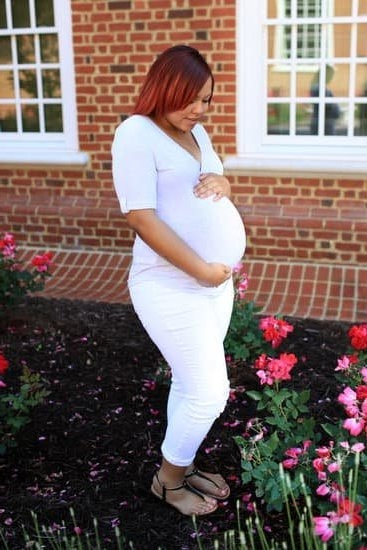How long does a pregnancy last? This is a question that many soon-to-be parents ask as they anticipate the arrival of their little one. Understanding the length of pregnancy is essential for expectant parents to prepare themselves physically, emotionally, and mentally for the journey ahead. From the stages of pregnancy to the factors that can affect its duration, there are various aspects to consider when it comes to this miraculous process.
Pregnancy is a remarkable journey that spans over several months, bringing about significant changes in a woman’s body and ultimately culminating in childbirth. The duration of pregnancy can vary from person to person and is influenced by a multitude of factors.
In this article, we will delve into the different stages of pregnancy, explore how the body changes throughout each trimester, discuss the development of the baby, and examine signs that labor is approaching. Additionally, we will also touch on factors that can impact the length of pregnancy.
As expectant parents eagerly await the arrival of their little bundle of joy, understanding the timeline of pregnancy is crucial for proper preparation and anticipation. Let’s explore everything you need to know about how long a pregnancy lasts and embrace this beautiful journey towards parenthood.
The Stages of Pregnancy
The Early Stages: Conception to Week 12
During the early stages of pregnancy, a woman may not even be aware that she is expecting. The process begins with conception, where the egg is fertilized by the sperm, and the journey of pregnancy officially starts. Over the course of the first 12 weeks, major developments occur as the fertilized egg becomes an embryo and then a fetus. The body undergoes significant changes during this time, including hormonal shifts, morning sickness, and fatigue.
Midway Point: Week 13 to Week 27
The second trimester is often referred to as the “honeymoon phase” of pregnancy. By this time, many women have adjusted to their changing bodies and may feel more energized. During these weeks, the baby experiences rapid growth and development. Some pregnant individuals may start feeling their baby’s movements towards the latter part of this trimester. This stage also brings its own set of challenges like heartburn, backache, and stretch marks.
The Final Stretch: Week 28 to Week 40
As a woman enters her third trimester, she can anticipate her body preparing for childbirth. At this point in pregnancy, discomforts such as frequent urination, swelling in the legs and feet, and shortness of breath may become more pronounced. Additionally, a woman’s body will undergo physical changes in preparation for labor and birth. It’s important to stay attentive to any signs of preterm labor during this stage.
Understanding the different stages of pregnancy can help expectant mothers prepare both emotionally and physically for what lies ahead. Whether it’s navigating through morning sickness or anticipating labor pain – every stage comes with its own set challenges and joys.
The First Trimester
During the first trimester of pregnancy, a woman’s body undergoes numerous changes as it adapts to creating a nurturing environment for the developing fetus. This period spans from week 1 to week 12 after conception and is crucial for the baby’s growth and development. Here are some of the key changes that occur in the mother’s body during this stage:
- Implantation: During the first few weeks, the fertilized egg implants itself into the lining of the uterus, triggering the release of pregnancy hormones.
- Nausea and fatigue: Many women experience morning sickness during the first trimester, along with increased feelings of tiredness.
- Breast changes: The breasts may become tender, swollen, or more sensitive as they prepare for breastfeeding.
In addition to these physical changes, it is important for pregnant women to start taking prenatal vitamins, schedule their first prenatal care visit with a healthcare provider, and make any necessary lifestyle adjustments to support a healthy pregnancy. It is also essential to be mindful of one’s emotional well-being during this time, as hormonal fluctuations may contribute to mood swings or heightened emotions.
Overall, the first trimester sets the stage for an incredible journey that culminates in childbirth. Understanding how long does a pregnancy last helps women prepare not only physically but also mentally and emotionally for the life-changing experience of becoming a mother.
The Second Trimester
By the midpoint of the second trimester, around week 20, most pregnant women undergo an ultrasound to check on the baby’s growth and development. This is when many parents find out the gender of their baby if they choose to do so. Around this time, the baby starts developing its own unique fingerprints and footprints. Additionally, the mother can start feeling fetal movements known as “quickening”, which are often described as fluttering sensations or gentle kicks.
As the second trimester progresses, it is common for pregnant women to experience a boost in energy and an increase in appetite. Some women also notice changes in their skin, such as stretch marks or darkening of the skin around the nipples. It is important for expectant mothers to attend regular prenatal check-ups during this time to monitor their health and that of their baby.
| Aspect | Information |
|---|---|
| Duration | Weeks 13-27 |
| Milestones | Growth ultrasound; Baby’s gender reveal; Development of unique fingerprints/footprints; Quickening (fetal movements) |
| Physical Changes | Increase in energy; Boost in appetite; Skin changes such as stretch marks or darkening around nipples |
The Third Trimester
What to Expect During the Third Trimester
During the third trimester, your baby’s development enters a crucial stage. Here are some key developments that take place during this time:
- By week 28, your baby’s eyes can open and close
- By week 32, they can turn their head from side to side
- By week 36, their lungs are almost fully developed
In addition to these developments in the baby’s growth, expectant mothers will also experience changes in their bodies during the third trimester. These may include increased discomfort due to the growing size of the baby, difficulty sleeping due to frequent urination and discomfort, and Braxton Hicks contractions as the body prepares for labor.
Preparation for Childbirth
As you approach your due date, it’s important to start preparing for childbirth. Some essential steps include:
- Creating a birth plan and discussing it with your healthcare provider
- Taking childbirth education classes to learn about labor, delivery options, and pain management techniques
- Packing your hospital bag with essentials for both you and your baby
It’s important to listen to your body during this time and communicate any concerns or changes with your healthcare provider. Every pregnancy is unique, so it’s essential to have regular check-ups and stay informed about what is happening in your body as you near the end of your pregnancy.
Factors That Can Affect the Length of Pregnancy
Pregnancy is typically expected to last around 40 weeks, but there are several factors that can affect the length of pregnancy. It is important for expectant mothers to be aware of these factors and how they can impact the duration of their pregnancy.
Maternal Health
The overall health and well-being of the mother can play a significant role in determining the length of her pregnancy. Certain medical conditions, such as diabetes or high blood pressure, can increase the risk of preterm labor. Additionally, maternal age and weight can also impact the length of pregnancy. Women who are under 18 or over 35 years old, as well as those who are overweight or underweight, may be at a higher risk of delivering early.
Lifestyle Habits
The lifestyle choices and habits of an expectant mother can also influence the duration of her pregnancy. Smoking, drug use, and excessive alcohol consumption have been linked to preterm birth. It is important for pregnant women to prioritize their health by maintaining a balanced diet, staying physically active, getting enough rest, and avoiding harmful substances.
Multiples Pregnancy
Women who are carrying more than one baby are at an increased risk of delivering early. Twins or triplets often have a shorter gestational period compared to singleton pregnancies. This is because multiple fetuses put more strain on the mother’s body and may cause early contractions or other complications that lead to premature birth.
Understanding these factors can help expectant mothers make informed decisions about their health during pregnancy and take necessary precautions to ensure a full-term delivery. By working closely with healthcare providers and following guidelines for prenatal care, women can increase their chances of having a healthy, full-length pregnancy.
Signs That Labor Is Approaching
As the due date approaches, many pregnant women begin to look for signs that labor is imminent. While every woman’s experience is different, there are some common indicators that can signal the onset of labor. One of the most well-known signs is the start of contractions, which can be distinguished from Braxton Hicks contractions by their regularity and intensity. These contractions help to thin and open the cervix, signaling that labor is underway.
Another sign that labor is approaching is when the baby “drops” or engages lower into the pelvis. This can ease pressure on the diaphragm, making it easier for the mother to breathe, but also increasing pressure in her pelvic area and causing frequent trips to the bathroom as the baby’s head puts more pressure on her bladder.
Additionally, women may notice a “bloody show,” which occurs when the mucus plug that seals off the cervix during pregnancy is released as it begins to dilate. This may result in a pink or blood-tinged discharge. Some women also experience an increase in vaginal discharge as labor nears.
Moreover, a surge of energy or burst of nesting instincts could be seen before labor starts – this involves feeling unusually energetic and a strong urge to clean and organize their home.
| Indicator | Sign of Labor |
|---|---|
| Contractions | Regular and intense contractions |
| Baby Dropping | Engagement lower into the pelvis |
| Bloody Show | Mucus plug release resulting in pink or blood-tinged discharge |
| Nesting InstinctsSurge of energy and strong urge to clean or organize |
Conclusion
In conclusion, the length of pregnancy is a remarkable and transformative journey for both the mother and the baby. From the early stages of conception to the final moments before labor, each trimester is filled with changes, growth, and anticipation. The body undergoes incredible transformations to accommodate the growing baby, while the baby develops and prepares for life outside the womb. It is truly a miracle of nature.
As expectant parents prepare for the arrival of their little one, it’s important to embrace this journey with patience, understanding, and joy. Every pregnancy is unique and may vary in duration due to various factors such as genetics, overall health, and lifestyle.
While the average length of pregnancy is around 40 weeks, it’s essential to remember that each woman’s experience may differ. It’s crucial to work closely with healthcare providers during this time to ensure a healthy pregnancy for both mother and baby.
The signs that labor is approaching are exciting yet nerve-wracking for soon-to-be parents. From Braxton Hicks contractions to the rupture of membranes, these signals indicate that birth is near. As childbirth approaches, it’s natural for mothers and their partners to feel a mix of emotions – from excitement to nervousness. However long a pregnancy may last, the anticipation of meeting the baby for the first time makes every moment worthwhile.
Frequently Asked Questions
Does Pregnancy Last 9 or 10 Months?
Pregnancy typically lasts for about 40 weeks, which is equivalent to 9 months and one week. This duration is calculated from the first day of the woman’s last menstrual period to the baby’s birth.
How Long Does First Pregnancy Usually Last?
The first pregnancy usually lasts around 38 to 42 weeks. However, for first-time mothers, it tends to be closer to 41 weeks as the body may take longer to prepare for childbirth and labor.
How Long Does Early Pregnancy Last?
Early pregnancy is generally considered to be the first trimester, which spans from week 1 to week 12 of gestation. This is a crucial period of development for the baby, and symptoms like morning sickness and fatigue are common during this time.

Welcome to my fertility blog. This is a space where I will be sharing my experiences as I navigate through the world of fertility treatments, as well as provide information and resources about fertility and pregnancy.





